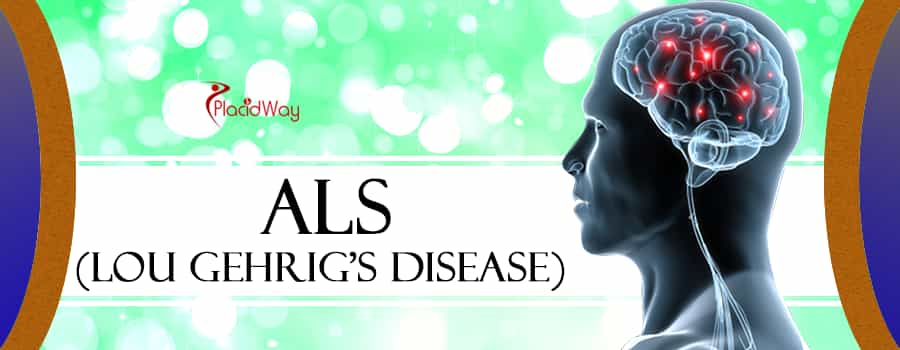
Discovered by a French doctor Jean-Martin Charcot in 1869, ALS (Amyotrophic Lateral Sclerosis) is a progressive neurodegenerative disease that affects the transmission of information through the neurons from the brain to the muscles. It does this by destroying the very nerves which conduct this information to the muscles. Since the muscles basically perform all the movement (including breathing) of the body, the disease is very dangerous and has high mortality rates. It is also called the Lou Gehrig’s disease after the famous baseball player from the 1930s who was diagnosed with it.
The main problem with the ALS is that, while its progression can be slowed down, there is really no cure which will stop the progression of the disease and completely reverse the symptoms. However, like we said, its progression can be slowed down, giving the patients more time and hope that the cure might be eventually found, while improving their way of life with ALS.
The definitive cause or causes of the ALS are still unknown to doctors and scientists, although, given the evidence and case studies, the scientists are narrowing down a few causes that might increase the risk of getting ALS. All we know is that in about 5-10% of the cases the disease is inherited through one or both parents. For the remaining 90-95%, while they do know for sure, the scientists have a few ideas as to where they might come from:
There are also some factors which seemingly increase the risk of developing ALS:
The symptoms of ALS get progressively worse as the time with the disease passes. Early symptoms of this disease include:
In essence, once the ALS starts, the muscles in the body receive less and less signals to activate. As they become less active, they atrophy over time, meaning they no longer work and you the control over them. The biggest problem is that, as ALS progresses, more and more muscles are affected, until it affects the diaphragm muscles, which facilitate breathing movement. At this point, it becomes difficult for the patient to breathe and they have to be put on life-support machines for breathing.
As we have said, so far, the ALS is incurable and scientists are yet to discover a treatment that will fully reverse all the symptoms. However, there are some treatments, like the stem cell treatment, which show great potential as a possible cure (although it might be a bit too soon to speak of a cure), while there are others which help relieve the symptoms, if not completely remove them. These treatments include:
When it comes to stem cell therapy, there are programs available now which are working with the potential of the mesenchymal stromal cells (MSCs), which are known to secrete proteins which support the growth of nerve cells and neurons. These cells also exert a controlling influence on the immune system, which can further prevent the damage to the already healthy nerve cells. These cells have high probability of being the future of ALS treatment, at least until a more definitive cure is found.
The procedure is done by extracting the MSCs from the patient’s fat cells, and then injecting them into the nervous system through a series of injections. In some clinics, this is combined with alternative medicine (such as Chinese Herbal Medicine) to increase the effects.
The benefits of treating ALS
The cost of Treatments for ALS
The cost of the treatment is far from standardized, especially for the stem cell treatment. On average, the cost of the stem cell treatment around the world is $20,000, although the prices vary greatly from one country to another, due to the differences in medical costs and overall costs of living in different countries.
The cost of other treatments for ALS depends on the approach used, as well as the type of medication. A month's supply of Rilutek may cost an average of $600 to $700 a month. The cost for physical therapy depends on the facility offering such services, as well as the amount of time spent on therapeutic service. Neuromuscular re-education therapeutic services may range between $100 to $400 per hour. All those prices can vary greatly in different countries, depending on the standard of living and the country's healthcare system.
Choosing the right clinic and treatment
Treatment for ALS around the world is available at quite a few clinics. However, before booking a treatment in any of them, it is vital that you get acquainted with each of them and verify which one offers the highest rates of success. This can be done by checking the clinics, seeing for how long they have provided this treatment, as well as reading up on patient testimonials and thorough checking whether the doctor performing the treatment has had any experience with ALS treatments in general. This will help you make a more informed decision and see whether you should get your hopes up.
If you are already suffering from ALS (Lou Gehrig's Disease) and want to know how going abroad can help you, feel free to contact us and find out more.
Alternative Chronic Health Therapies | Best Medical Centers Abroad